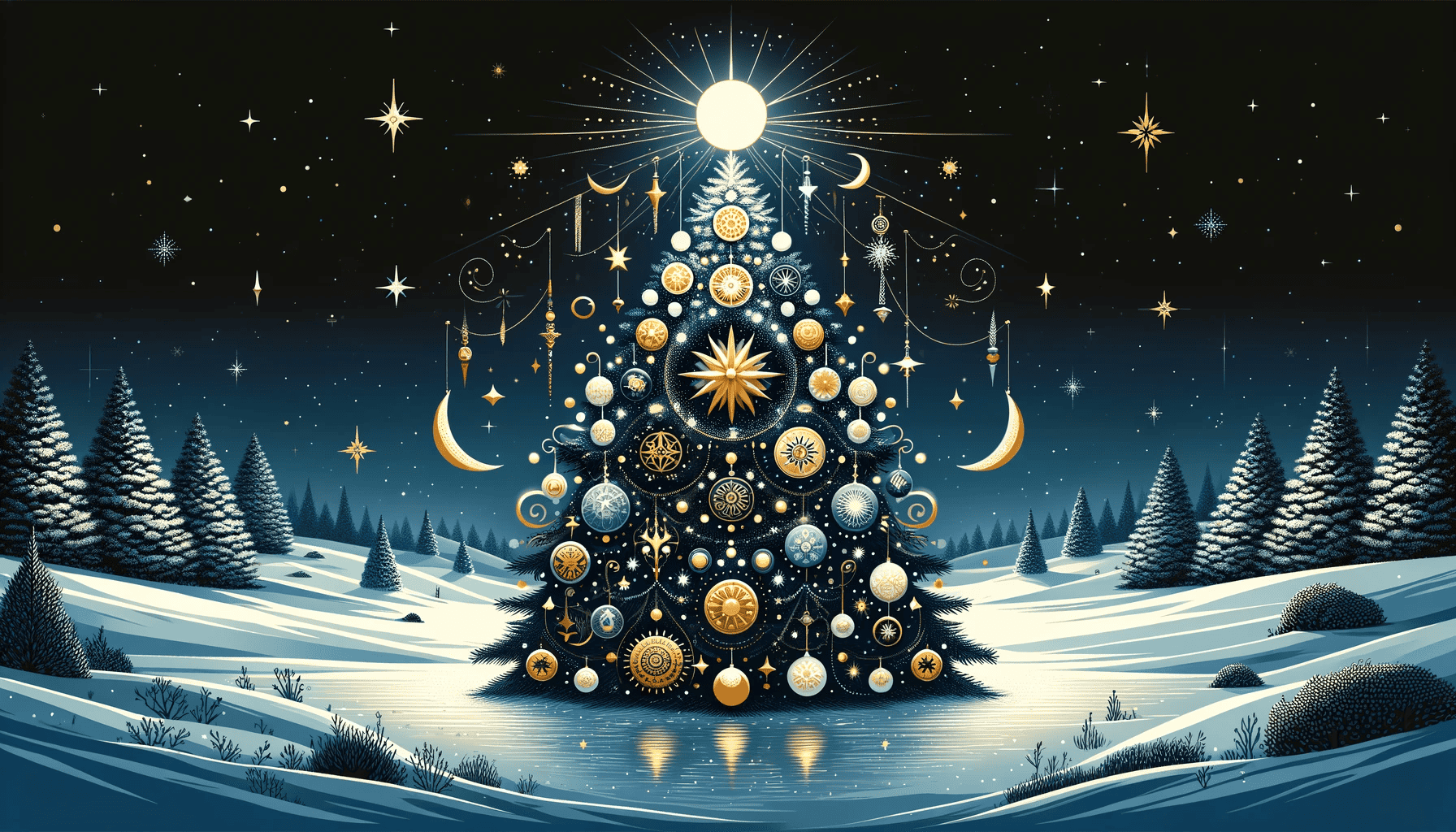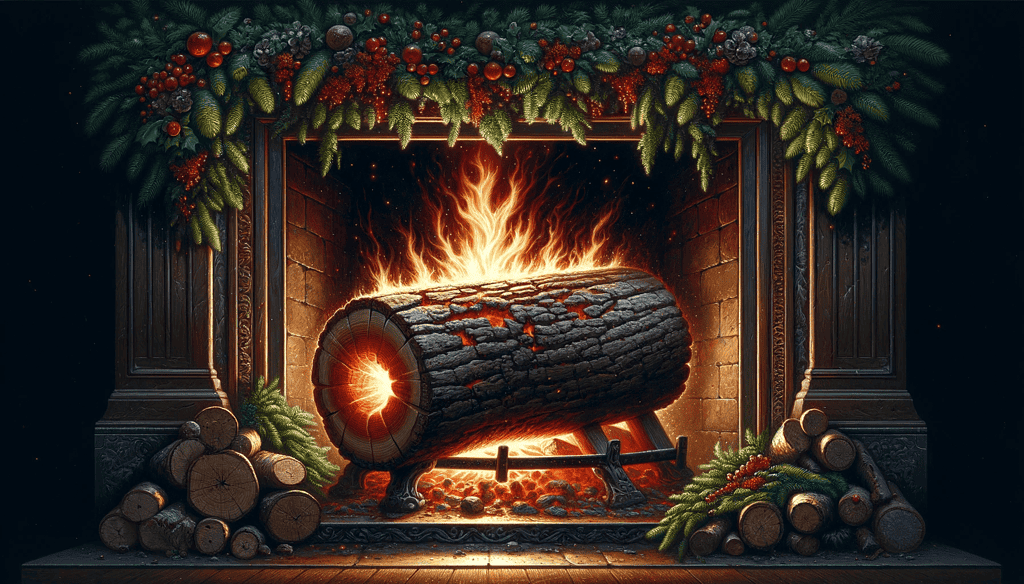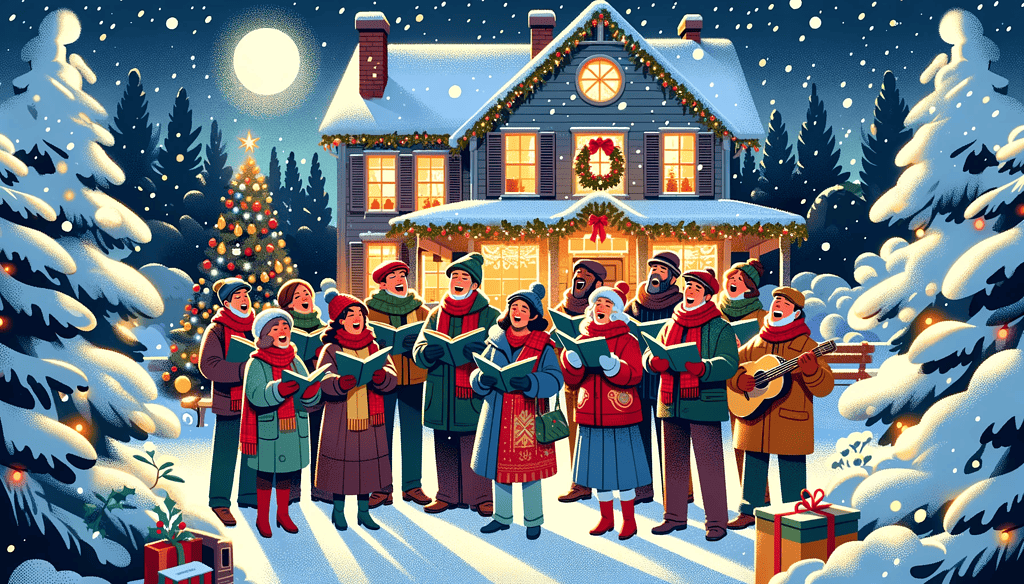
The season of Yule, marked by the winter solstice, is a poignant and historical celebration. Yule is deeply rooted in ancient traditions and customs. This festivity, observed during the darkest time of the year, illuminates the significance of light, rebirth, and renewal.
Yuletime has also influenced modern festivals like Christmas. In fact, if you want to understand the Christmas holiday, you need to dive into the heart of Yule traditions. So let’s do that
Origins and History of Yule
Yule, originally a pagan festival, dates back to the pre-Christian era, deeply entrenched in the Norse and Germanic cultures. The word “Yule” itself likely stems from the Old Norse word ‘jól’, signifying a feast during the midwinter. This period, also known as the winter solstice, is the longest night of the year, traditionally viewed as a time when the veil between this world and the next was thinnest.
The winter solstice, occurring around December 21st, signifies the rebirth of the sun. It’s the shortest daytime and the longest nighttime of the year. But as this day marks the start of the gradual return of daylight, it is a symbol of hope and renewal. This celebration of light amidst the darkest days was a common thread in many cultures, from the Roman Saturnalia to the Celtic celebrations.
This was a time of celebration — a feast with bountiful food and ale, where the god Odin and other Norse gods would be celebrated.
Yule Log Tradition
The Burning of the Yule Log

One of the most enduring Yule traditions is the burning of the Yule log. This custom involves choosing a large log, often oak or ash, and burning it in the hearth. The tradition symbolizes the warmth of the sun and its power to overcome darkness. It was believed that the ashes of the Yule log held protective and fertile properties, and they were often kept to be used in the following year’s planting.
This tradition is also linked to bonfires and the general idea of lighting fires on winter solstice. Several cultures would light a fire to give support to the sun and help it make it through the rough winter.
Symbolism and Modern Adaptations
While fewer homes have hearths today, the Yule log tradition persists in various forms, including smaller logs used as candle holders or even as a chocolate cake known as a “Bûche de Noël”, popular in French cuisine.
Decorating the Yule Tree
The Yule tree, now commonly known as the Christmas tree, has its roots in pagan traditions. Pagans would decorate trees with symbols of prosperity and fortune, such as suns, moons, and stars. As Christianity spread, this tradition was absorbed into Christmas celebrations, with the tree symbolizing eternal life in Christ.
Such traditions would be celebrated in Germanic and Norse folklore.
Initially, Yule trees were adorned with natural decorations like fruits, nuts, and candles. Over time, these evolved into the myriad of ornaments seen today, reflecting a blend of cultural and personal significances.
Yule Feast and Traditional Foods
The Yule feast is a central element of the celebration, featuring dishes that are both hearty and symbolic. Traditional foods include roasted meats, mulled wine, and seasonal vegetables. These feasts not only provide physical sustenance but also serve as a communal activity, strengthening bonds among family and friends.
Different cultures have added their unique flavors to Yule cuisine. For example, in Scandinavia, a traditional Yule dish is the ‘julbord’, a buffet with a variety of cold and hot dishes. In contrast, British celebrations often feature a rich, fruit-filled Christmas pudding. Feasting is an essential part and different peoples around the world have different dishes for Yuletime. Here are some of them:
- Roasted Meats: Such as turkey, goose, pork, or beef, often the centerpiece of the Yule feast.
- Yule Ham: A seasoned and glazed ham that is a staple in many Scandinavian Yule celebrations.
- Mulled Wine: Red wine heated with spices like cinnamon, cloves, and orange, embodying the warmth of the season.
- Gingerbread: Spiced, sweetened bread or cookies, often shaped into festive forms like houses or figures.
- Yule Log Cake (Bûche de Noël): A sponge cake rolled and decorated to look like a log, popular in French tradition.
- Figgy Pudding: A rich, fruity pudding that’s a traditional British Christmas dessert.
- Mince Pies: Small pies filled with minced fruits and spices, a British Yule favorite.
- Nuts and Dried Fruits: Symbolizing prosperity and abundance, often used in various Yule dishes or as snacks.
- Wassail: A hot, mulled punch often associated with Yuletide, traditionally made with cider.
- Julbord Dishes: A variety of foods that form part of the Swedish ‘julbord’, including pickled herring, smoked salmon, and meatballs.
- Stollen: A German fruit bread filled with marzipan and dusted with powdered sugar, typically eaten during the Christmas season.
- Panettone: An Italian type of sweet bread loaf originally from Milan, typically prepared and enjoyed for Christmas and New Year in Italy.
Yule Gift-Giving Customs
The act of gift-giving during Yule has evolved significantly over the centuries. Originally, gifts were simple and often handmade, symbolizing love and care rather than material value. As Yule merged with Christmas, the tradition of gift-giving expanded, influenced by narratives such as St. Nicholas or Santa Claus. Funny enough, Norse gods are also involved in this.
In particular, the Norse god Odin was seen as a gift giver. He would ride the night sky as well. In time, his characteristics became blended with Santa Claus. Without Odin, we may not have had Santa’s reindeer and Christmas stockings.
Despite the commercialization of gift-giving, the essence of this custom remains – to express affection and gratitude, and to reinforce social bonds. In many cultures, the exchange of gifts is not just about the item itself, but the act of giving and the intention behind it.
Yule Songs and Carols

Yule songs and carols are a vibrant part of the celebration, often recounting tales of the season, ancient gods, and the winter solstice. These songs range from solemn chants to lively melodies, each carrying a piece of history and tradition.
As Yule traditions were integrated into Christmas, many pagan songs were adapted into Christian carols. However, the themes of light, hope, and nature remain prevalent, connecting these carols to their ancient roots.
Yule Rituals and Ceremonies
Yule rituals and ceremonies often revolve around themes of introspection, letting go of the past, and setting intentions for the future. These can include lighting candles, meditating, and even modern neo-pagan rituals that seek to reconnect with ancient traditions.
Different cultures and spiritual paths have their own unique Yule rituals. Some might involve storytelling, others may include singing and dancing, and some may focus on quiet reflection and gratitude.
There is, of course, also the mistletoe. The mistletoe (which is actually a parasitic species) forms a significant link between Yule and Christmas. In pre-Christian Europe, mistletoe was celebrated during Yule for its symbolism of life and fertility, especially during the dark winter months. Druids, for instance, viewed it as a sacred plant that could bring good luck and ward off evil spirits. As Christianity spread, many Yule traditions, including the use of mistletoe, were incorporated into Christmas celebrations. The custom of kissing under the mistletoe, now a common Christmas tradition, has its roots in Norse mythology, which associated the plant with love and friendship.
The Yule Wreaths and Decorations

Yule wreaths, traditionally made of evergreens, symbolize the eternal cycle of life and nature’s resilience. They are often adorned with items like berries, pine cones, and ribbons, each element holding its own meaning. The wreath has the same idea as the Christmas tree — an evergreen symbol linked to nature and healing.
Beyond wreaths, Yule decorations often include items like candles, bells, and garlands. These elements not only add to the festive atmosphere but also carry symbolic meanings, such as the bell’s sound warding off evil spirits.
Yule Symbols and Their Meanings
Yule is rich with symbols, each holding deep meanings. The evergreen tree represents everlasting life, the sun symbolizes rebirth, and the star atop the tree signifies the guiding light. Each of these elements contributes to the tapestry of Yule’s symbolism.
- Yule Log: Symbolizes the light returning after the darkest day of the year, embodying warmth and the promise of brighter days.
- Evergreen Trees: Represent eternal life and resilience, as they stay green throughout the winter.
- Mistletoe: A symbol of peace, love, and fertility; associated with ancient druid rituals.
- Holly: Represents protection and good luck; the red berries symbolize the continuity of life through the winter.
- Candles: Symbolize the return of the light and the sun’s power, illuminating the darkness of winter.
- Wreaths: Circular nature symbolizes the cycle of the seasons and life; made of evergreens to represent eternal life.
- The Sun: A central symbol of Yule, representing the rebirth of the sun and the return of longer days.
- Oak Tree: Revered in Druid traditions; symbolizes strength, stability, and endurance through the winter.
- Snowflakes: Each being unique, they symbolize individuality and the beauty of nature’s diversity.
- Bells: Used to drive away evil spirits and negative energies, welcoming good spirits and fortune.
- Stars: Often used as decorations to represent the guiding light, hope, and the celestial bodies.
- The Colors Red and Green: Red symbolizes vitality and life force, while green represents renewal and everlasting life.
The global reach of Yule
Yule’s celebration has transcended geographical and cultural boundaries, adapting to local customs and beliefs. This global spread has not only preserved the essence of Yule but has also allowed for the creation of new traditions, enriching the celebration for future generations.
People from all around the world celebrate Yule — though they may not always be aware of it. From the burning of the Yule log to the decoration of the Yule tree, each tradition carries a piece of history and a message of hope. As we embrace these customs, we connect with our ancestors, the natural world, and the universal human experience of seeking light in the darkness.









